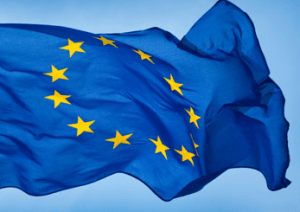EU stepping-up trade, investments in West Africa
 The European Union (EU) is taking steps to enhance its trade and investment engagement with West African (WA) countries, a high placed source at the Union told the Ghana News Agency (GNA).
The European Union (EU) is taking steps to enhance its trade and investment engagement with West African (WA) countries, a high placed source at the Union told the Ghana News Agency (GNA).
The source said the move was of a high priority for the EU explaining that the region had some of the heaviest economies with Nigeria being the biggest on the continent, followed by Ghana and Ivory Coast.
Speaking to the GNA in Brussels, the source, who has in-depth knowledge about the work of the EU, said countries in West Africa had witnessed sustainable economic growth over the last few years.
“The West Africa is the closest region in Sub Saharan Africa to Europe, strategically, economically, demographically, migratory, and socially will affect the EU, that is why the region is our priority,” the source said.
One of the key vehicles through which the EU wants to strengthen its trade and investments is through operationalisation of the Economic Partnership Agreement (EPA) – a trade and development agreements negotiated between the EU and West African countries to open up their markets for trade.
The Union wants to continue the EPA, which was concluded, and signed by all EU member states and all West African countries except Nigeria.
The source said trade volumes between EU and Ghana as well as Ivory Coast – two countries with interim EPAs had improved significantly compared to other partners in West Africa.
Since 2014, the total trade between the EU27 and Ghana and Cote d’Ivoire increased by 18 per cent.
EU imports from Ghana and Cote d’Ivoire have increased by six per cent, while imports have decreased by 25 per cent from the rest of the region.
Full duty-free quota-free market access to EU market has enabled Ghana and Côte d’Ivoire to increase their exports of transformed cocoa products to the EU market by 50 per cent and 30 per cent, respectively.
Both countries are gradually moving beyond the export of raw cocoa beans to cocoa products processed locally, thereby responding to the growing local demand, and consumption of “made in Africa” goods.
In 2023, the total trade between the EU 27 and Ghana was €6 billion, with a three per cent decrease compared to 2022.
Whilst EU’s exports to Ghana have decreased by 11 per cent in the same period, passing from €3.7 billion to €3.3 billion, EU’s imports from Ghana have increased by eight percent, passing from €2.4 billion to €2.6 billion.
Although the trade balance has a surplus in favour of the EU (worth €700 million), it has been cut almost by half compared to 2022, where it stood at €1.3 billion.
The source confirmed that the EU was open to consider all the options, including engaging in discussions with Nigeria on concerns including the apprehension that EU products would flood Nigerian markets, to reach a consensus to pave the way for the signing of the EPA deal.
The EU, as a second key vehicle, would launch a new initiative called “Sustainable Investment Facilitation Agreement” (SIFA) to improve the attraction, expansion and retention of foreign direct investments and create an environment for West Africa to become a hub for investment.
“We have already concluded a deal with Angola last year. Exploratory discussions have commenced with three countries in West Africa- Ghana, Ivory Coast, Nigeria,” the source said.
SIFA’s main aim and benefits cover all economic sectors to encourage diversification to new areas, such as food exports, manufacturing or services, making investments easier through transparent and predictable investment-related measures, simplifying investment authorisation procedures and fostering e-government, facilitating interactions between investors and the administrations.
It will make investments more sustainable, guarantee a bigger say for civil society, introduces reciprocal commitments towards investors from both sides, ensures respect to environmental and labour standards, which shall not be weakened for the sake of attracting investment and promotes corporate social responsibility and responsible business practices.
Source: GNA
